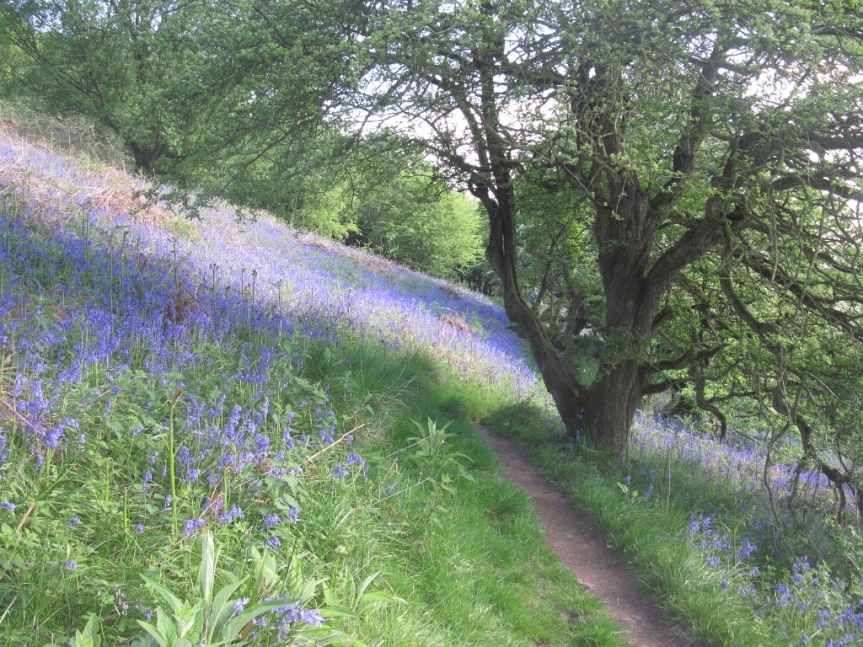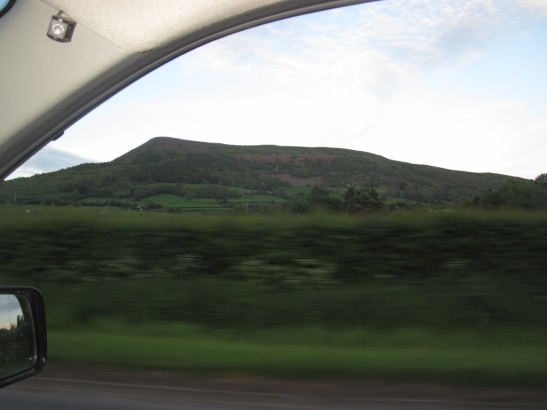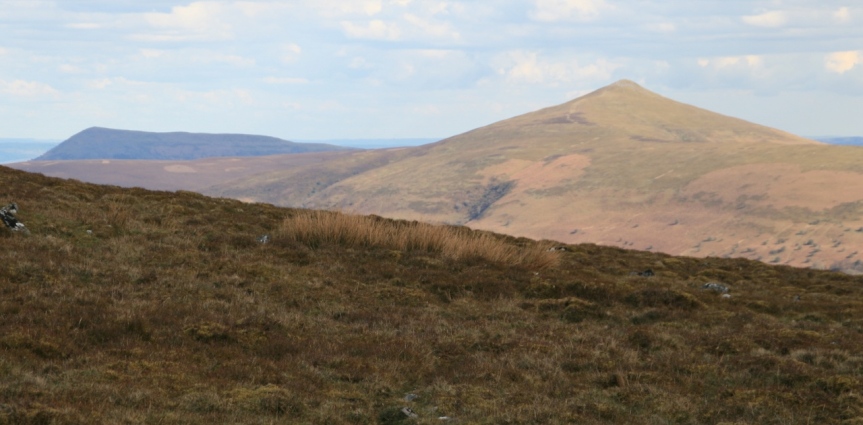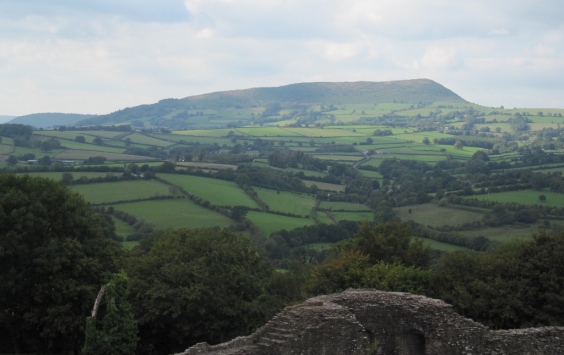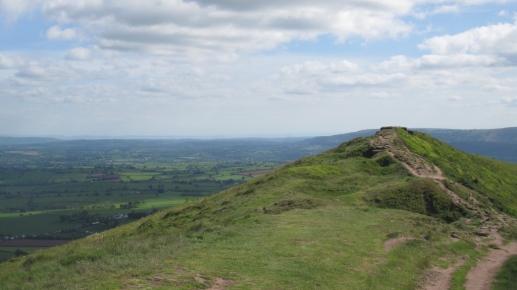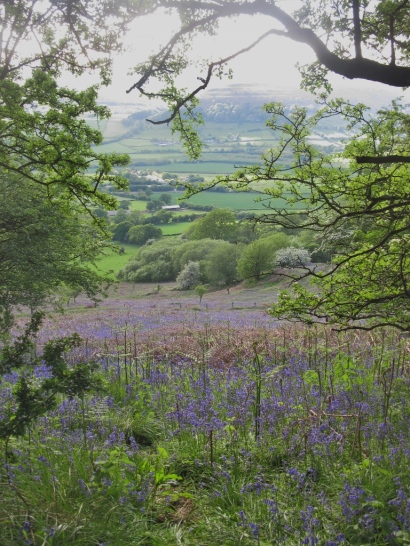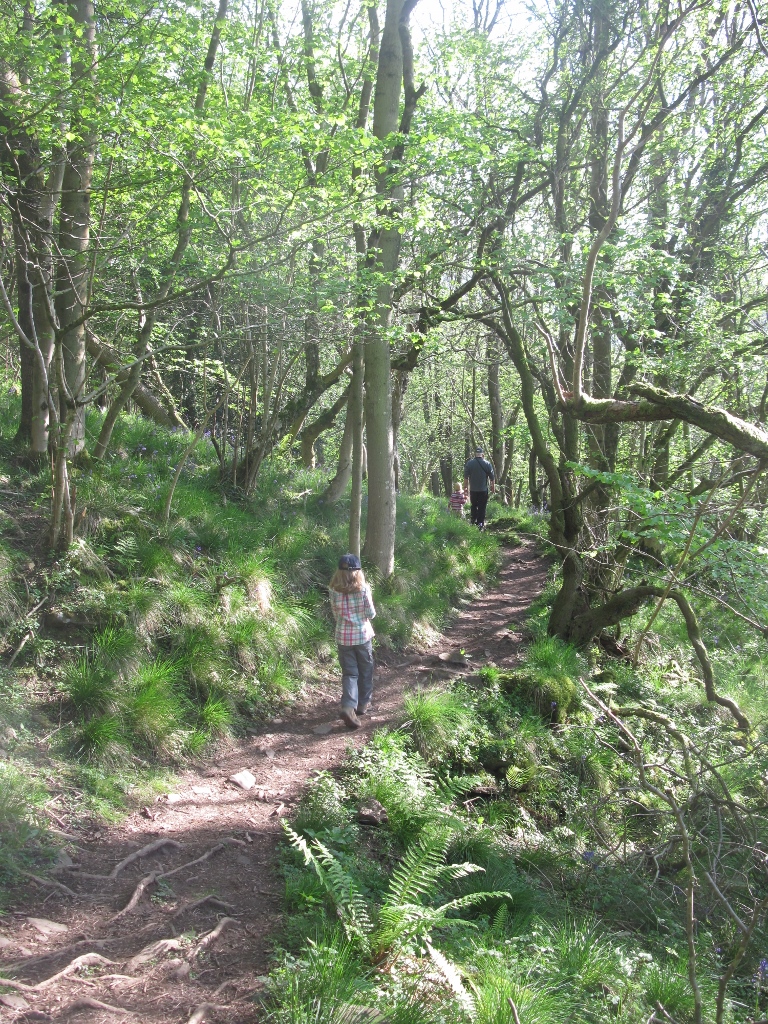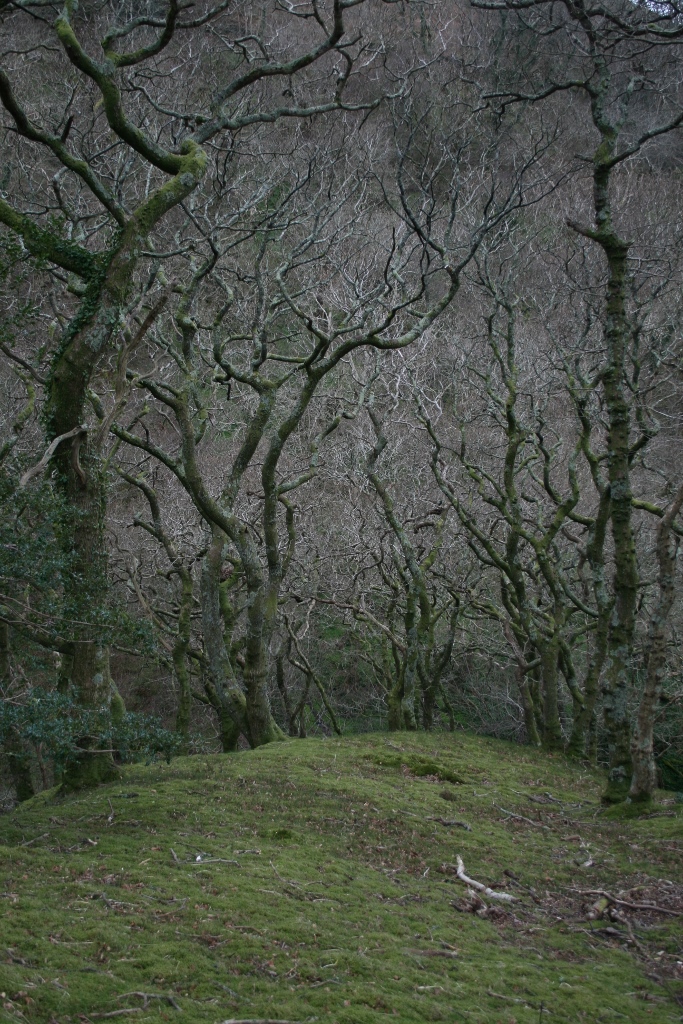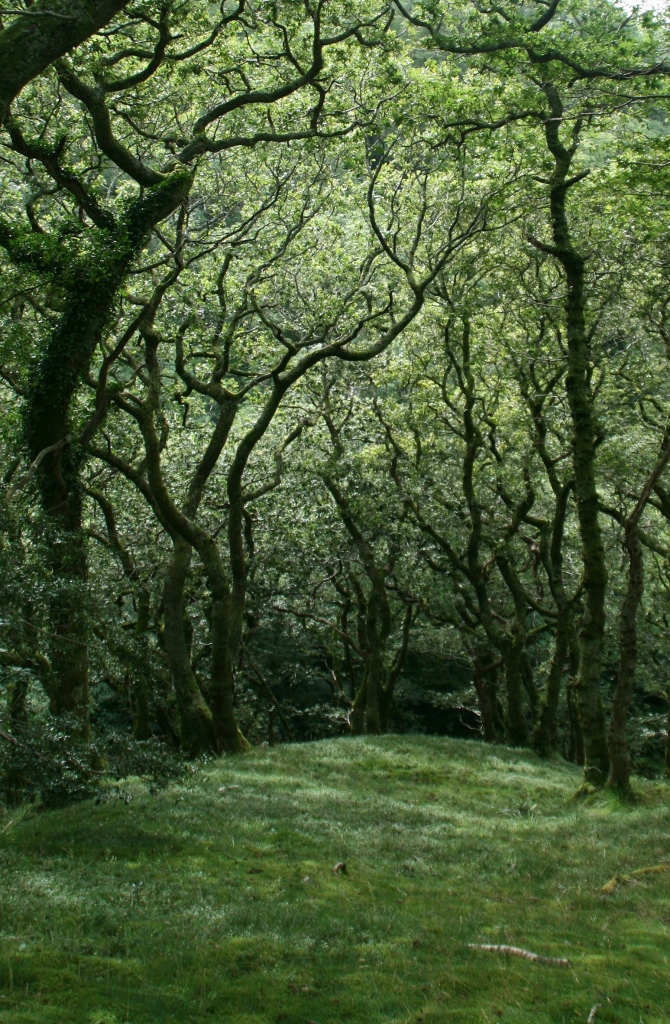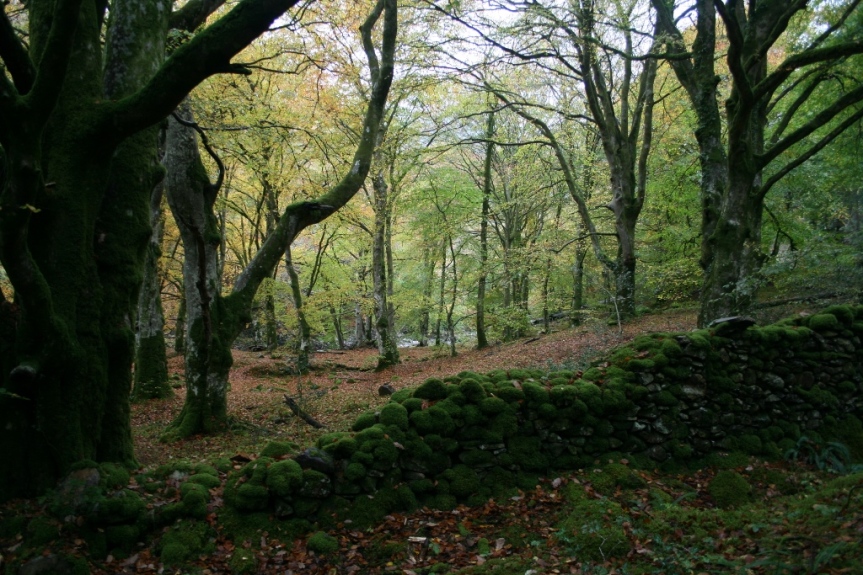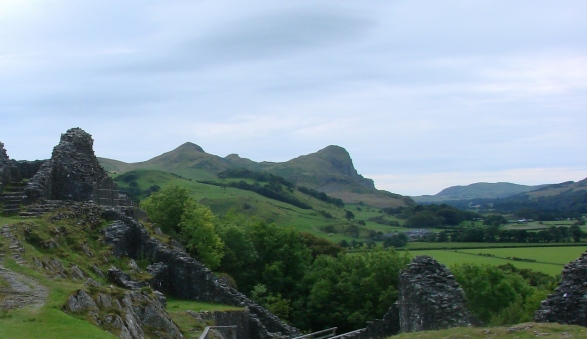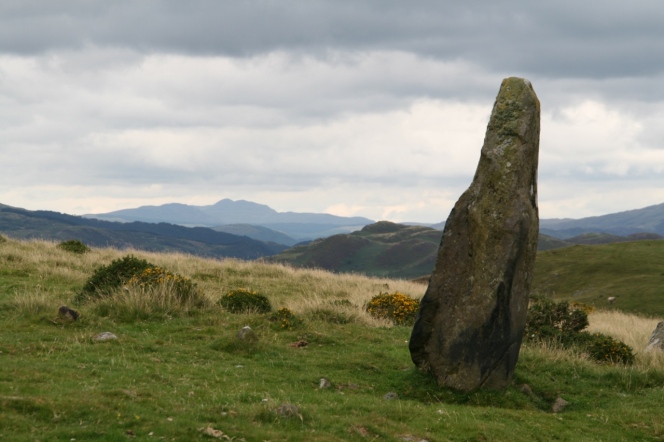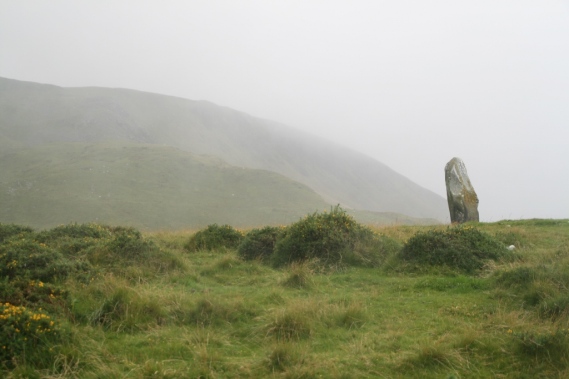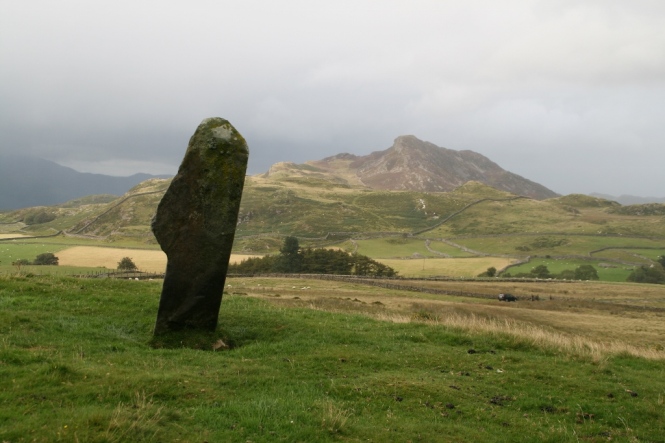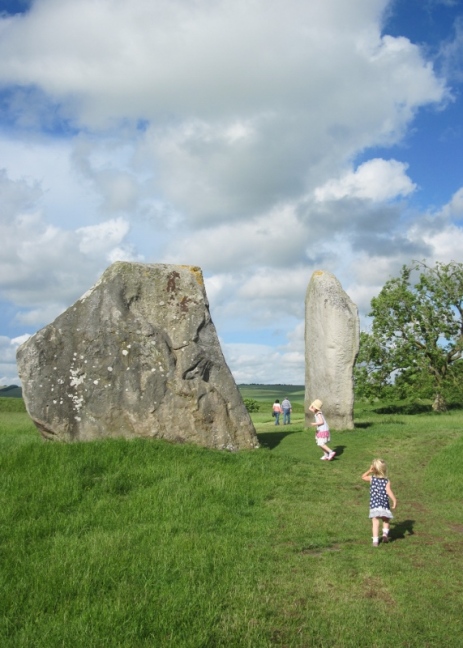Three weeks ago I fell in love. It’s been a long time since that happened and I was unprepared for the rush of excitement and passion, the overwhelming sense of “Yes!” of recognition along with the thrill of so many new discoveries to be made. Two weeks later, weeks in which my mind had constantly been drawn to my new object of affection, my partner asked what I would like to do for my birthday and I unhesitatingly said I wanted to return to the spot where I had fallen in love (I didn’t quite phrase it that way) and he kindly agreed. After a two hour drive, mostly through rain, the sky lightened and patches of blue welcomed us back to Dunraven Bay and this:

A walled garden. By the sea. All that is left of a country house built on a cliff and once known as Dunraven Castle. With the ramparts of an Iron Age Hillfort towering over the garden walls. If I had to create the most perfect place for a story, for inspiration, or to encompass the maximum number of items that I love to explore and write and read about – well I think I would have dismissed all this as just too much.

And did I mention the beach? Sand for building castles and dams, rock pools in which to hunt for scuttling wildlife and amazing rock strata in the cliffs to explore for fossils. The sunset picture at the top of my last blog post was taken as I tore myself away from the beach three weeks ago; it had been a perfect day and people were heading onto the beach with barbeques and drinks to watch the setting sun, still more had climbed to the banks and ditches of the hillfort to see the sun reflected on the sea and the gleaming sand.
That first visit had been primarily to look for fossils with my dinosaur-obsessed seven year old, we were going to try to find the steps down to the supposedly more secluded beach but I dived straight through the gothic doorway into the gardens – so often on days out we have said “we’ll explore it later” only for darkness to fall or for gates to be locked. That first glimpse of the gardens was more of a forced march but it left me longing for more, as did the view once we had left the garden and climbed through the woods to the other side of the peninsula.

No steps were obvious so we walked back through the few remains of the castle and on over the hillfort earthworks and back to the beach where a delightful afternoon of swimming, splashing, sandcastle and damn building was enjoyed by all, plus a picnic on the rocks broken up by catching shrimps and my toes being nibbled by a one-clawed crab.
Two weeks and one day later we returned. The school holidays were over and even though the sky became almost as cloudlessly blue, the heat had gone; autumn was in the air – although it didn’t stop us all from paddling in the sea. I’ve never swum on my birthday before. There were more surfers than swimmers this time due to the impressive waves and you could feel the force of the water tugging us towards the Devon coast across the hazy water. (I’ve forgotten to mention where Dunraven is, haven’t I? South Glamorgan, the wonderful Heritage Coast in south Wales. The beach is also known as Southerndown.)
In the weeks since our first visit I searched on line for pictures of the missing castle/house to find out why it had been demolished in the 1960s. There are many beautiful black and white photographs of it but I have no wish to steal someone else’s images. Here are some, along with the history of the area and in someone else’s fascination with the castle here However, on this visit we went to the Heritage Centre behind the beach (it had been closed two weeks earlier) and while reading the many panels about the house and grounds and the history, what struck me most was an aerial view showing the circle of the hillfort as it would have been before the cliffs crumbled away and suddenly the effrontery of building a country house inside a two thousand year old hill fort hit me. I don’t know why. I don’t find the village built within the earthworks at Avebury – and using some of its ancient standing stones for building material – shocking. “Baffled and amused at the very British practical vandalism” was how I described it elsewhere on this blog but somehow, a house built for one family’s grandeur seemed wrong as I read about the history of the 500BC hillfort, possible Roman occupation, Saxon raids, its gifting to a Norman Lord after 1066, rumours of Wreckers and the original Tudor Mansion. I’m not saying I’m glad the house has gone, I would have love to have seen it high on that cliff, although given the coastal erosion I wonder how much longer it would have safely lasted? I don’t know why the aerial shots had this effect on me, there are many here on the wonderful website Coflein, an online catalogue of archaeology, buildings, industrial and maritime heritage in Wales with a whole page devoted to Dunraven hillfort. The ones in thick frost make me long to visit in winter and this one with the deep shadows of early morning show the ramparts at their best, you can see how at least a third of the hillfort has been swallowed by the sea. You can also see the long point of the peninsula, called Trwyn-y-Witch or Witches Point, because obviously the place just wasn’t magical enough.

After lunch I finally made it back to the gardens. I’m sure I can write a whole ‘nother post about the allure of walled gardens, but to have four rising up the gentle valley, to feel the temperature rise by several degrees the minute you step inside the sheltering embrace of the walls, to hear the waves if you listen hard enough, and to have the two and a half thousand year old battlements of a hillfort rising over you makes this place very special. The gardens are being restored, very carefully and unobtrusively, and you are free to roam all over them. That first hot sunny day we arrived at high tide and there was no sandy beach to play on, the families simply decamped to the gardens to picnic under apple trees or on the many benches along the walkways, or to play ball games. The freedom to explore, the higgledy-piggledy growth of the plants, trees and shrubs, the formal lines of the paths and the walls that break the gardens up enticed and enchanted me the first time and did not disappoint on a more leisurely visit. I saw my first quince tree, alongside several figs. There weren’t that many flowering plants but colour was everywhere in countless shades of green, in the stark grey crenelated walls and in the blisteringly blue sky overhead.

The first garden has a greenhouse, I imagine it once had many, there are the remains of seed beds and the interior walls are almost obscured by climbing plants. A secretive set of mildly treacherous steps led up into the woods and the recent rain cast a fresh scent throughout.

The second garden had rows of fruit trees, although they seemed as if planted by chance with their low spreading friendly shade.

The third was wilder, shrubs I didn’t recognise and a wild overgrown hedge. Oh, and some ruins against the wall, because a lost house/castle and the possibility of a separate lost Tudor mansion simply wasn’t charm enough.

I think it was this garden more than any that made me long to stop and sit. For two weeks I had been spinning tales in my head based on this impossible mix of histories and archaeology and nature; all I longed for was a few hours with a laptop or pen and paper to sit and scribble as fast as I could, to soak up the atmosphere, to capture it’s beauty and mystery in words rather than simply with my camera. I began to fantasise about coming here for a break, staying anywhere nearby and spending entire days writing and plotting and dreaming. I could feel my muse both thirsting and being quenched at the same moment as I explored that tangled paradise.

And the fourth garden is a mostly level expanse of grass, maybe for tennis? Bowls? It brought to mind a place for jousting, but that may have been the wooden barriers as if to keep back crowds and the pavilion for courtly ladies to sit and watch. Oh, and of course the tower that was built over the ice house. Part folly? Part showing off? Pure plot inspiration.
Then on, through the darkly dappled woods via a squelchy path with the smell of rain on ancient trees refreshing us after the heat trapped within the walled garden. This is where people think the Tudor house could have been – how do you lose a Tudor Mansion? Up to the breath-taking view of the coast towards Cardiff and then doubling back to where Dunraven Castle stood, where its formal gardens and terraces gazed towards England, where the even more impressive and far older bulwarks of the hillfort bar your way. I haven’t explored those ramparts yet, or the Witches peninsula, neither seem too safe with two children under eight who run off the moment you glance away. Sitting on the beach later you could see people enjoying the view, they were probably well back from the cliff edge but from below they seemed in imminent danger of tumbling over.
I know I will go back, I don’t know how soon or if I can sneak some writing time there alone. As it’s our nearest beach I’m hoping for a few trips next summer, although I also long to see the gardens in their winter colours. I’m not sure when a place has grabbed me so totally and refused to let go. There are others that have inspired me and made me long to return and that have rewarded repeat visits – Castel-y-Bere, Longtown, Symi, Dolgoch Falls, Cregennan Lakes, Kingley Vale yew forest – but none that mixed so many elements of history, nature, ruin, loss, myth, archaeology – oh, and outstanding beauty. And fossils. And crabs. And there’s a small shop selling ice cream and tea. Didn’t I say it was perfect? Now to finish the book I am writing and start just one of the many plots this place has inspired.

This is the look of a woman who does not want to leave. Have any places captured you so totally?
